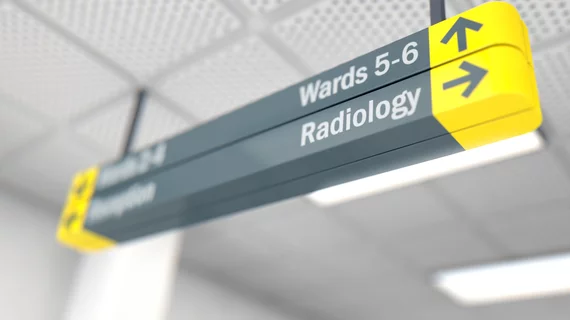Emergency CT for stomach pain is declining among kids but not adults—who receive more ineffective exams
Emergency computed tomography use for evaluating pediatric patients with abdominal pain has steadily declined over recent years but continues to rise among adults, according to a new 20-year analysis.
The drop is largely attributed to recent quality improvement efforts from the American Society of Pediatrics and American College of Radiology, including an ultrasound-first strategy for suspected appendicitis. Given the known risk factors associated with CT—radiation exposure and incidental findings—similar campaigns may be required for adult populations, authors explained Thursday in AJR.
"Although trends in CT use have previously been reported for children and adults, our study is the first, to our knowledge, to contrast the two cohorts in the ED setting in a nationally representative sample," first author Ralph C. Wang, MD, with the University of California, San Francisco’s emergency medicine department, and colleagues wrote.
The researchers analyzed National Hospital Ambulatory Medical Care Survey data results from 1997-2016, keying in on CT and ultrasound use for abdominal pain and appendicitis diagnoses. The survey results comprise stratified samples of ED visits in noninstitutional general and short-stay hospitals across all 50 states.
Looking at the figures, pediatric CT utilization started at 1.2% in 1997 and peaked in 2010 at 16.6%, before taking a slight downturn at the end of the study period.
In adults, meanwhile, utilization continued to rise from 3.9% in 1997 to 37.8% in 2016.
Additionally, CT exams ordered to evaluate abdominal pain in adults—already occurring two to three times more often than in pediatric patients—also increased throughout the nearly 20-year period ending in 2016.
“This increase over time in CT use for adults was not associated with an increase in the proportion of diagnoses of appendicitis during visits for abdominal pain, suggesting that the increase in CT use may not benefit patients but instead results in more patients without appendicitis receiving CT,” the authors noted.
Wang and colleagues said a trial is needed to compare the accuracy and effectiveness—including cost and length of stay—of ultrasound and CT for adults with suspected appendicitis.
“If it is found that a US-first approach is beneficial (similar clinical outcomes but decreased radiation and incidental findings), then there should be wide efforts to improve training of technologists and radiologists in performing US when acute appendicitis is suspected,” the group concluded.
Read the entire study published in the American Journal of Roentgenology here.

